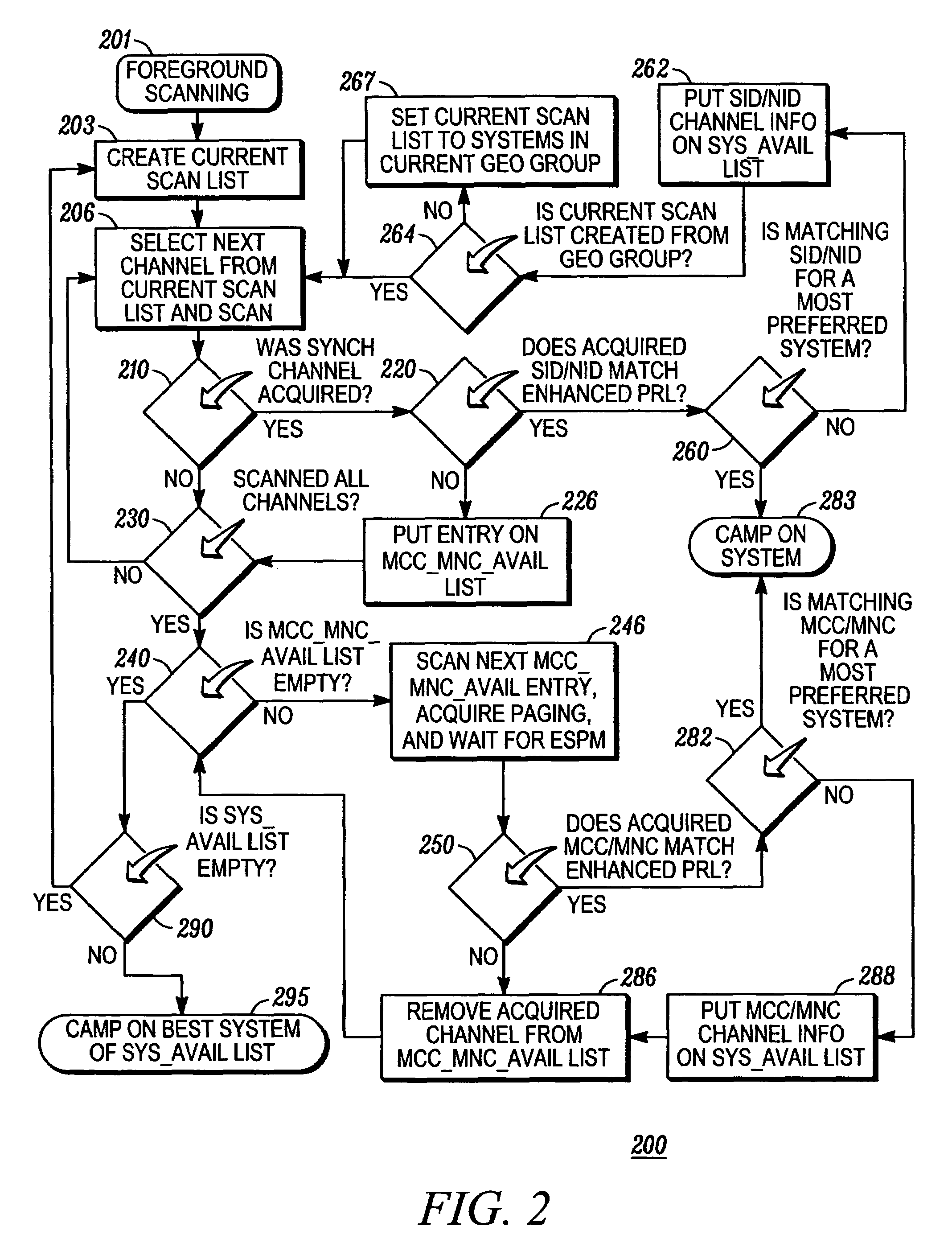Using an enhanced preferred roaming list in a terminal device
a terminal device and preferred roaming technology, applied in the field of preferred roaming lists, can solve the problems of cdma terminal devices being potentially smaller, the way that roaming partners and their network systems are being identified to cdma subscriber devices is becoming unwieldy, and it takes a cdma terminal device up to two seconds to obtain mcc/mn
- Summary
- Abstract
- Description
- Claims
- Application Information
AI Technical Summary
Benefits of technology
Problems solved by technology
Method used
Image
Examples
first embodiment
[0022]FIG. 2 shows a flowchart 200 for using an enhanced PRL in a terminal device for international roaming according to a This flowchart 200 can be implemented using software in the microprocessor 160 of the terminal device 100 shown in FIG. 1. This flowchart 200 implemented in the microprocessor 160 interacts with an enhanced PRL 150, a scan list in a memory 120, and a receiver in the CDMA transceiver 180.
[0023]The flowchart 200 starts in step 201 with foreground scanning by the receiver in the CDMA transceiver 180 (shown in FIG. 1). During foreground scanning, the terminal device 100 has not acquired an acceptable system, as defined by a system table portion of the enhanced PRL 150, and is scanning for an acceptable system to acquire. Step 203 obtains a current scan list from one or more scan lists in the memory 120 of the terminal device 100. A scan list contains channel frequencies in order of priority (e.g., home networks, then preferred networks, then roam networks, then oth...
second embodiment
[0033]FIG. 3 shows a flowchart 300 for using an enhanced PRL in a terminal device for international roaming according to a This flowchart 300 can be implemented using software in the microprocessor 160 of the terminal device 100 shown in FIG. 1. This flowchart 300 implemented in the microprocessor 160 interacts with an enhanced PRL 150, a scan list in a memory 120, and a receiver in the CDMA transceiver 180. Instead of merely checking whether acquired SID / NIDs or MCC / MNCs match to a system table of an enhanced PRL at the time of acquisition, this flowchart 300 maps acquired SID / NIDs to MCC / MNC entries in a system table of the enhanced PRL. Thus, when a mapped SID / NID is subsequently acquired, there is a high probability that the terminal device can camp on the acquired system—even if the enhanced PRL does not specifically include that SID / NID. This can occur, for example, when an enhanced PRL includes only MCC / MNC entries or when SID / NID entries in an enhanced PRL are not supersede...
PUM
 Login to View More
Login to View More Abstract
Description
Claims
Application Information
 Login to View More
Login to View More - R&D
- Intellectual Property
- Life Sciences
- Materials
- Tech Scout
- Unparalleled Data Quality
- Higher Quality Content
- 60% Fewer Hallucinations
Browse by: Latest US Patents, China's latest patents, Technical Efficacy Thesaurus, Application Domain, Technology Topic, Popular Technical Reports.
© 2025 PatSnap. All rights reserved.Legal|Privacy policy|Modern Slavery Act Transparency Statement|Sitemap|About US| Contact US: help@patsnap.com



